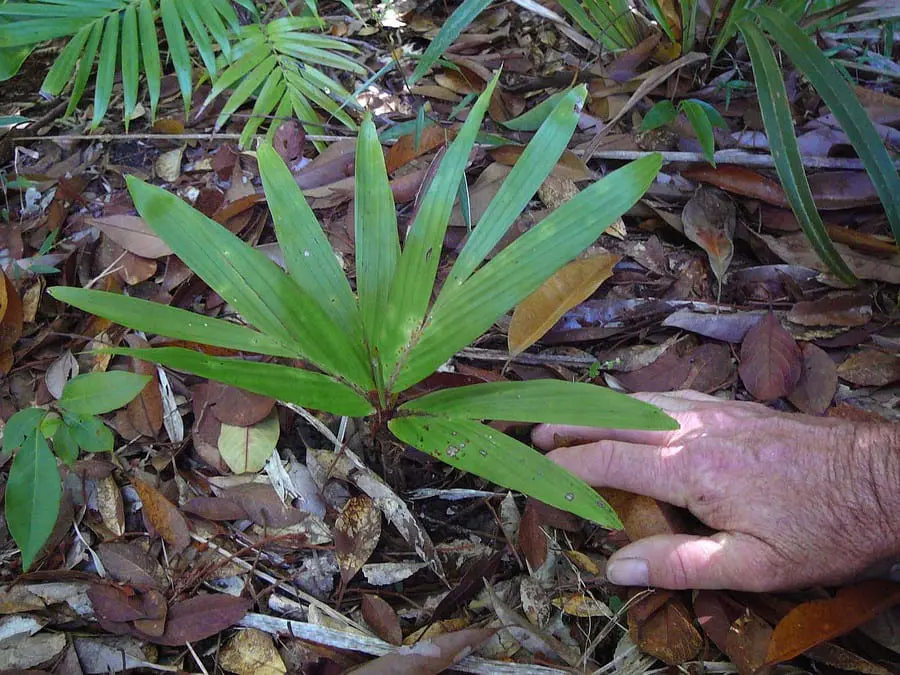Normally when we are told about palm trees, we immediately think of plants with trunks that are more or less thin and, above all, tall, 5, 7 or more meters. But there is a species that could well go unnoticed: the Dypsis minuta . It is so small that it can be kept in a pot throughout its life without any problem.
It is a very interesting little plant for tropical and subtropical climates, but how do you take care of it?
Index
- 1 Characteristics of Dypsis minuta
- 2 Cultivation or care
Characteristics of Dypsis minuta
Our protagonist is a palm endemic to Madagascar, where it lives in the rain forests at an altitude of between 200 and 550 meters. It grows to a maximum height of 50cm , and is made up of 5-8 bifid green leaves (two leaflets) that are about 20cm long, and a small stem or trunk 30-40cm tall.
The flowers are very curious . They are like “balls” yellowish-white at first and reddish later that arise from a flower stem, which comes out of the center of the plant. The seeds are small, 1cm, and hard.
Cultivation or care

Image – Palmpedia
Would you like to have a copy? It is not easy to find for sale, and less on campus. However, the seeds can be obtained in an online store. If you finally succeed, these are your care:
- Location : it has to be protected from direct sun.
- Substrate : rich in organic matter and with good drainage .
- Irrigation : frequent, but avoiding waterlogging. Therefore, it is advisable to water it every 2-3 days in summer, and a little less the rest of the year.
- Transplant : every two years you have to add a new substrate.
- Fertilizer : it is very important to pay with a specific product for palm trees, following the instructions specified on the package.
- Multiplication : by seeds in spring. Sow in a zip lock bag filled with vermiculite.
- Hardiness : it is very sensitive to cold and frost. Temperatures below 10ºC affect it. It also needs protection against heat (over 30ºC).
Have you heard of this plant?

